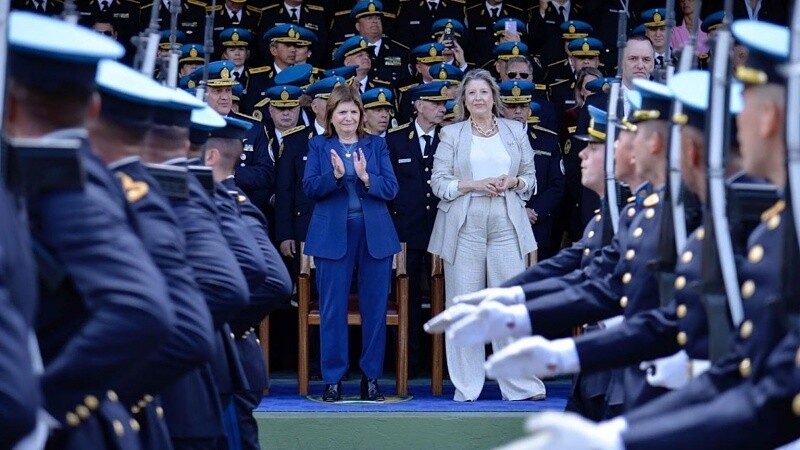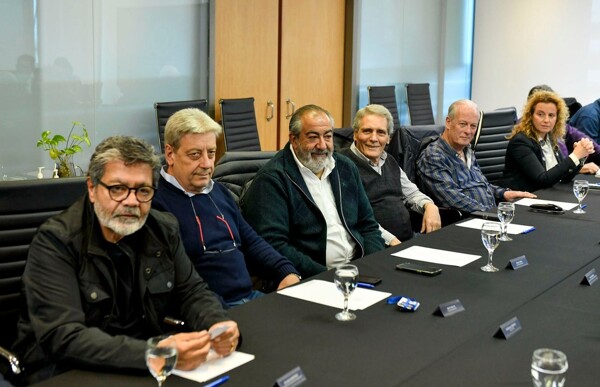
To celebrate the 204th anniversary of the Federal Police, Minister of Security Patricia Bullrich Luro Pueyrredon restored the name “Ramón Falcón” to the force's cadet school and named the sub-officer school after “Alberto Villar”. Consistent with her ideology and actions, the former member of the Peronist Youth honored the commissioner responsible for the persecution and murder of her former comrades in the 70s and the genocidal colonel from the “Conquest of the Desert” and murderer of the workers at Plaza Lorea in the repression he ordered on May 1, 1909, shortly after taking over the Capital Police, as it was then known. This school was born thanks to a police officer, Ramón Falcón, who gave it its orientation. Thus, through threats, summary executions, and forced disappearances, he initiated a path of horror that the dictatorship would turn into state policy, aligning repression with the economic and social restructuring of Argentine society. In January 1974, Villar was summoned by López Rega or Perón, depending on the source, to assume the position of Deputy Chief of the Federal Police. The minister restored the name of Ramón Falcón to the Federal Police Cadet School and went out of her way to praise the head of the Triple A, Alberto Villar, a genocidal commissioner whom no one had dared to vindicate. Conceived by José López Rega with the tacit approval or the blind eye of General Perón, the Triple A was made up of members of the Federal Police, the three Armed Forces, the State Intelligence Secretariat (SIDE), right-wing Peronist groups such as the Organization Command, the CNU (National University Concentration), and common criminals like Aníbal Gordon. Between 1973 and 1976, the AAA was responsible for the disappearance and murder of between 700 and 1,100 people and the forced exile of political activists, artists, and intellectuals. Several trials are currently underway to judge those responsible for the crimes committed by this para-state organization. Colonel Ramón Falcón. Colonel Ramón Falcón gives his name to one of the city's longest streets, which runs parallel to Rivadavia Avenue on its south side—his name is usually covered by that of his executor, Simón Radowitzky. In this repression, he spared no worker's blood. On May 1, 1909, the demonstration called by the FORA anarchists at Plaza Lorea was repressed with a toll of 11 dead and over 105 wounded, with a total of 70 people dying in the following days. The labor organizations called for a general strike and decided to maintain it until Falcón resigned. “For ideological reasons, they removed his name, and I instructed the head of the Argentine Federal Police to restore the truth,” the minister stated. He also took control of the Triple A in the shadows. He is particularly linked to the murder of the lawyer for political prisoners and national deputy of Peronism Rodolfo Ortega Peña in July 1974 and to the savage repression at his funeral in Chacarita, where 400 people were detained. It should be remembered that in 2006, Federal Judge Norberto Oyarbide ruled that the crimes committed by the AAA were considered crimes against humanity and therefore imprescriptible. In 1906, President José Figueroa Alcorta appointed him head of the Capital Police. His baptism of fire in the force came on May 1 of that year when he launched 120 “Cossacks” on horseback who fired their weapons against unarmed civilians, sowing the avenue with dead and wounded. In 1907, during the Tenant Strike, also known as the “broom strike,” Falcón was in charge of the repression and evictions. In 1972, he earned his promotion when he himself entered the national headquarters of the Justicialist Party in a tank while the revolutionary militancy of all stripes was mourning three of the militants shot in Trelew on August 22. It was Ana María Villarreal de Santucho, Eduardo Cappello, and María Angélica Sabelli, whose bodies riddled by bullets from the Navy were requisitioned by the Federal Police. Villar attacks the central headquarters of the PJ on Avenida La Plata 254 / August 23, 1974. Villar's security detail was about to get into the cars when the ten kilos of trotyl that the tactical divers of a Montoneros command had attached to the hull of the launch exploded, ending the lives of the couple. Shortly after, he was promoted to Commissioner General and appointed head of the force. On the deck, Commissioner Alberto Villar, alias “Tubo” and his wife, Elva Marina Pérez, were preparing to enjoy a holiday Friday outing in the Delta. On November 1, 1974, Commissioner Major Villar was appointed by Perón to head the Federal Police with the express order to “restore order” and end the “subversive” phenomenon. This para-state terrorist organization of the ultra-right began the persecution and murders of left-wing militants within and outside of Peronism.













